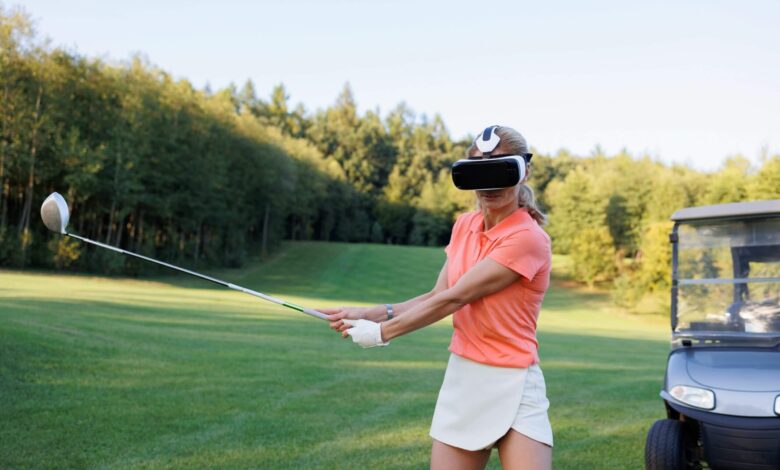How Virtual Reality is Changing the Golfing Experience

The world of golf has always been synonymous with lush greens, fresh air, and the satisfying swing of a club. However, with the rapid advancement of technology, a new dimension is being added to the traditional golfing experience: virtual reality (VR). The integration of VR into golf has not only made the sport more accessible but has also redefined how enthusiasts practice, play, and enjoy the game. One of the most exciting developments in this realm is the rise of indoor golf experiences, powered by cutting-edge VR technology.
The Rise of Virtual Reality in Golf
Virtual reality has come a long way in recent years, with realistic graphics, responsive sensors, and immersive environments transforming the way we interact with digital worlds. In the context of golf, VR technology has made it possible to replicate real-world courses, allowing players to experience famous greens from the comfort of their homes or specialized indoor golf venues. The appeal of VR in golf lies not only in its realism but also in its ability to accommodate a wide range of skill levels.
Bringing the Outdoors In
One of the key benefits of VR in golf is that it brings the essence of outdoor play into indoor environments. Gone are the days when adverse weather or lack of space could hinder a round of golf. With VR, players can immerse themselves in a visually stunning and highly accurate simulation of courses from around the world, complete with realistic terrain and environmental factors like wind speed and elevation changes.
The Evolution of Indoor Golf Experiences
The concept of indoor golf is not entirely new, but VR technology has taken it to an unprecedented level. Early indoor golf simulators were often limited to basic swing analysis and rudimentary course graphics. Today, modern setups offer hyper-realistic visuals, motion-tracking technology, and even multiplayer modes that let you compete with friends or other enthusiasts online.
Why Golfers Are Embracing Indoor Golf
There are several reasons why golfers are gravitating towards indoor golf experiences enhanced by VR:
- Year-Round Accessibility: Weather conditions no longer dictate whether you can practice your swing.
- Precision and Realism: Advanced sensors and VR setups provide detailed feedback on swing mechanics, ball trajectory, and impact.
- Social Engagement: Indoor golf venues often feature multiplayer capabilities, fostering a social environment that mirrors traditional golfing communities.
- Skill Improvement: VR golf setups offer in-depth analytics that help players identify weaknesses and track progress over time.
The Technology Behind VR Golf
Creating a realistic golf experience in a virtual setting requires sophisticated technology. The core components of VR golf systems include:
- High-Resolution Projectors: These provide crystal-clear graphics that replicate the nuances of famous golf courses.
- Motion-Tracking Sensors: Placed strategically to capture every aspect of a player’s swing.
- Club Sensors: Attachments that accurately track speed, angle, and force.
- Haptic Feedback Devices: Simulate the feel of striking the ball, enhancing immersion.
Advanced Analytics and Data
One of the most appealing features of VR golf is the data-driven approach to skill enhancement. Players receive real-time feedback on their swings, including club speed, angle of impact, and ball flight path. This information is invaluable for both beginners looking to improve and seasoned golfers aiming to fine-tune their technique.
How VR Golf Is Shaping the Future of the Sport
The introduction of VR to golf is not just a fleeting trend—it’s a transformative shift that has the potential to change how the sport is played and perceived. Here are some key areas where VR is making a significant impact:
Training and Skill Development
Professional golfers and coaches are increasingly incorporating VR into training routines. By simulating various course conditions and offering data-driven insights, VR serves as an invaluable tool for improving precision and consistency.
Expanding Accessibility
Golf has often been seen as an elite sport, limited by cost and accessibility. VR democratizes the experience, allowing enthusiasts from different backgrounds to practice and play without needing access to private courses or memberships.
Community Building
Virtual golf communities are thriving, connecting players from around the world. Through online matches, tournaments, and social events, VR is fostering a global golf community that transcends geographic boundaries.
Challenges and Future Developments
While VR golf offers a myriad of benefits, it also faces challenges related to realism and affordability. Advanced setups can be costly, and replicating the tactile feedback of striking a ball on a real course remains a technological hurdle. However, as VR technology continues to evolve, these barriers are likely to diminish.
Innovations on the Horizon
- Improved Haptics: Enhancing the feel of club impact to increase immersion.
- Augmented Reality Integration: Combining VR with real-world elements for a hybrid golfing experience.
- AI Coaching: Integrating AI algorithms to provide personalized feedback and training plans.
Final Thoughts
Virtual reality is revolutionizing the golfing experience by blending tradition with technology. As more enthusiasts embrace indoor golf setups, the sport becomes more accessible, engaging, and data-driven. Whether you are an amateur looking to practice during the off-season or a seasoned pro refining your swing, the future of golf is undoubtedly intertwined with VR innovation.

